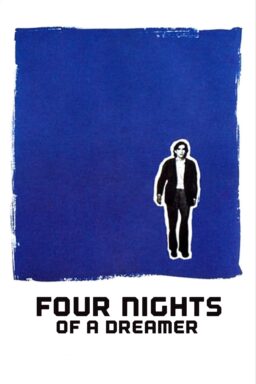
Flushing away evidence of guilt in the toilet. A big drain.

Shower. Head.
Imagine the “Psycho” shower scene without Marion Crane or Mrs. Bates. Alfred Hitchcock‘s (and Saul Bass’s) rapid-cut sequence is renowned for its use of close-ups to suggest the slicing of flesh when, in fact, there is none on the screen. You create that illusion in the cuts.

The plumbing continues to function as it is designed to, without regard to Marion’s trauma.

The ripping of a membrane, like flesh (keeps the wet inside), as Marion (below frame) reaches out, clutches at life while it slips from her grasp.
But what really makes the sequence work, I’d argue, is the way Hitchcock uses plumbing. Back in 1998, I published an extensive web article on Plumbing in the Cinema, in which I quoted from Stephen Rebello’s book, “Alfred Hitchcock and the Making of Psycho“:
“The script is shot through with obvious delight in skewering America’s sacred cows — virginity, cleanliness, privacy, masculinity, sex, mother love, marriage, the reliance on pills, the sanctity of the family… and the bathroom.” Rubello quotes screenwriter Joseph Stephano on the subject of primal-screen plumbing: “I told Hitch ‘I would like Marion to tear up a piece of paper and flush it down the toilet and SEE that toilet. Can we do that?’ A toilet had never been seen on-screen before, let alone flushing it. Hitch said, ‘I’m going to have to fight them on it.’ I thought if I could begin to unhinge audiences by showing a toilet flushing — we all suffer from peccadillos from toilet procedures — they’d be so out of it by the time of the shower murder, it would be an absolute killer. I thought [about the audience], ‘This is where you’re going to begin to know what the human race is all about. We’re going to start by showing you the toilet and it’s only going to get worse.’ We were getting into Freudian stuff and Hitchcock dug that kind of thing, so I knew we would get to see that toilet on-screen.” Just the sight of the flushing toilet was considered shocking enough to mildly unsettle and disorient audiences of the day.
And the same is true today, though perhaps less noticeably so. In the same plumbing piece, here’s the way I described what happens next:
Hitchcock’s guilty fugitive protagonist, Marion Crane (Janet Leigh), having totaled the sum of her indebtedness, monetary and karmic, on a slip of paper, rips up the evidence of her culpability, flushes it down the water chute (although a telltale piece of it misses the bowl, as Detective Arbogast [Martin Balsalm] will later discover) and steps into the shower. Just as she’s figuratively washing her the sins of her recent past down the drain, Mrs. Bates pays her a visit with a butcher knife. Marion pays for her sins in blood. And the image of her blood swirling into the blackness of the drain dissolves into an image of her now-lifeless eye. Her head lies on the bathroom floor next to the toilet. For what is a human body itself — its arteries and intestines and organs and other viscera — but an elaborate piece of organic plumbing?

Following the blood and the water down the drain.
That cold, hard biological reality underscores the whole scene, from the time Marion, looking for someplace to dispose of her accounting besides the wastebasket (where that nosy Norman would undoubtedly discover it), first glances toward the bathroom, hesitates, and then decides to take a shower. The hollow sound of the tiled room echoes through the scene — and, of course, Marion’s physical vulnerability is emphasized by her nakedness and the noise of the shower drowning out the rest of the world. She’s even made a point of closing the door firmly before stepping into the shower.

Into the drain, and out of a lifeless eye…
You can make all the Freudian jokes you like about the phallic showerhead, but it works. Yeah, it’s sexual, and Marion seems almost orgasmic when she slides under its spray. It’s also cleansing, even cathartic after all Marion’s been through since her furtive afternoon quickie (in bra and panties) with her boyfriend in the hotel room at the start of the picture: Since leaving work the previous day, she’s made a rash and fateful decision to steal cash from her employer and skip town. She exchanged cars, had a close encounter with a cop beside the highway in the desert, drove in the dark and pouring rain, and then had that strange little talk with the young man in the back room full of stuffed and mounted birds — the boy with the mean old invalid-ed mother locked up in that spooky house looming behind the motel. Who wouldn’t like to take a nice hot shower after a day-and-a-half like that?
[images missing: insert your memory of Marion’s murder here]
What you see on this page are just the close-ups of insentient bathroom fixtures in the sequence. All images containing organic matter have been stripped out. Marion is about to become one of these inanimate objects. The image of her blood swirling in the tub, and her dead face mashed against the white tile floor, shocks us even as it prepares us for the clean-up scene, where we will shift our identification from Marion onto Norman. To Hitchcock’s perverse delight, we will soon be rooting for Norman to scrub away and dispose of the evidence of our (ex-) main character’s murder. The drain is metaphorical, but it’s also the abyss. Marion has been our surrogate; and now her pupil is as void and lifeless as that hole. We peer into it, unable to fathom where it leads, and the blackness beckons…
This is another contribution to the Close-Up Blog-a-thon at the House Next Door.










